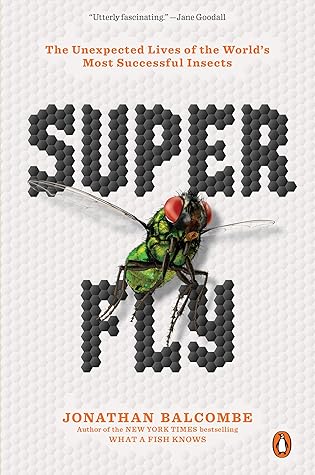Kindle Notes & Highlights
Read between
October 11 - November 10, 2022
Midges own gold medals for most numerous insects at a given site, and they’re consumed by more different species than any other aquatic insect.
A recent survey of midges in Canada found a level of diversity that, when extrapolated to the global ecosystem, predicts greater diversity than for all other groups of animals, including the celebrated beetles.
Swallows are obligate insectivores,
The swallows’ arrival days after the midges’ emergence was no coincidence; it’s been going on for thousands, perhaps millions, of years.
Richard Louv
Last Child in the Woods,
nature-deficit d...
This highlight has been truncated due to consecutive passage length restrictions.
James Wandersee
Elisabeth Schussler
plant blindness for the lost connection between the foods we eat and the crops that provide them, and the missing awareness th...
This highlight has been truncated due to consecutive passage length restrictions.
insect bl...
This highlight has been truncated due to consecutive passage length restrictions.
ocean blindness,
fish blindness.
interdependence.
John Muir: “When one tugs at a single thing in nature, one finds it attached to...
This highlight has been truncated due to consecutive passage length restrictions.
Consider our planet represented by a jumbo jet. Each of the millions of rivets holding the fuselage together represents an individual species. Losing a species equates to popping a rivet from the jet. Hundreds, perhaps thousands of rivets could be popped out at random, and the jet will continue to function as a whole. But if the process is allowed to continue, pieces of the fuselage will start to loosen and rattle. Inevitably, as this “extinction” process continues, a chunk of the jet will fall off. We know what happens next: collapse. The entire system goes down.
Diversity fosters stability.
According to the best available data, the total mass of insects is falling by a precipitous 2.5 percent a year, a rate of loss (and likely extinction) eight times faster than that of mammals, birds, and reptiles.
A study published in autumn 2018 documented a 76 percent decline in the total biomass of flying insects (crawling bugs were not sampled) netted at 63 locations in Germany over the last three decades. Losses in midsummer, at the peak of insect abundance, exceeded 80 percent. Pesticide use and loss of suitable habitat to farming are suspected as the leading culprits. One of the study’s coauthors described the implications thus: “If we lose the insects, then everything is going to collapse.” The New York Times, in a somber editorial, described it as an “insect Armageddon.”
David Wagner, an expert in invertebrate conservation at the University of Connecticut,
Albert Schweitzer
There is evidence for an innate human fear of spiders and snakes,
“We are born without the fear of nature,” writes biologist Piotr Naskrecki
2005 book The Smaller Majority,
fungus-loving fly,
antler fly,
cactus...
This highlight has been truncated due to consecutive passage length restrictions.
“No animal or plant in nature is capable of ugliness unless we disapprove of it,” writes novelist and naturalist Jonathan Franzen in his 2018 book The End of the End of the Earth.
“More than a quarter of the world’s population eats insects,” says journalist David MacNeal, author of Bugged.
Gail Anderson shared with me a blunt perspective uniquely fitting a forensic entomologist: “Without carrion insects we’d be dead. The Earth would have used up its nutrients a long time ago. We are all bags of nutrients, and flies recycle those nutrients back to the Earth. This not only stops disease from lingering, but it provides plants with their food. Life continues.”
But let’s not kid ourselves: a million years after the last human is gone, a fly will be perched on a leaf or rock rubbing her feet together. We may imagine a world without flies, but should it come to pass, we won’t be there to witness it.
The aviator Charles Lindbergh, delirious with sleep-deprivation, is alleged to have had conversations with a fly during his historic 1927 transatlantic solo flight.
A detailed map of a portion of a fruit fly’s brain containing some 25,000 neurons, among which can exist some 20 million interconnections. (© JANELIA RESEARCH CAMPUS/FLYEM)
So there are 12 million / 2.59 = over 4,600 [4,630] square miles of human skin on Earth.
US Food and Drug Administration (FDA) permits up to 450 insect parts and 9 rodent hairs in every 16-ounce box of spaghetti:
According to recent FDA data, there are about 5 million pus cells in the average cup of cow’s milk:


